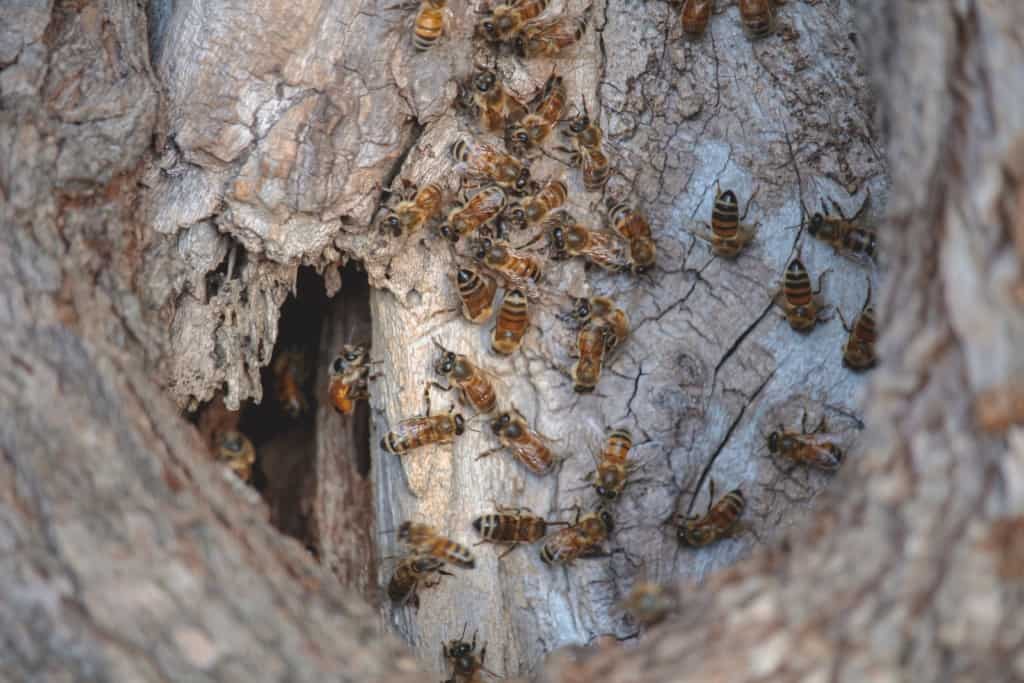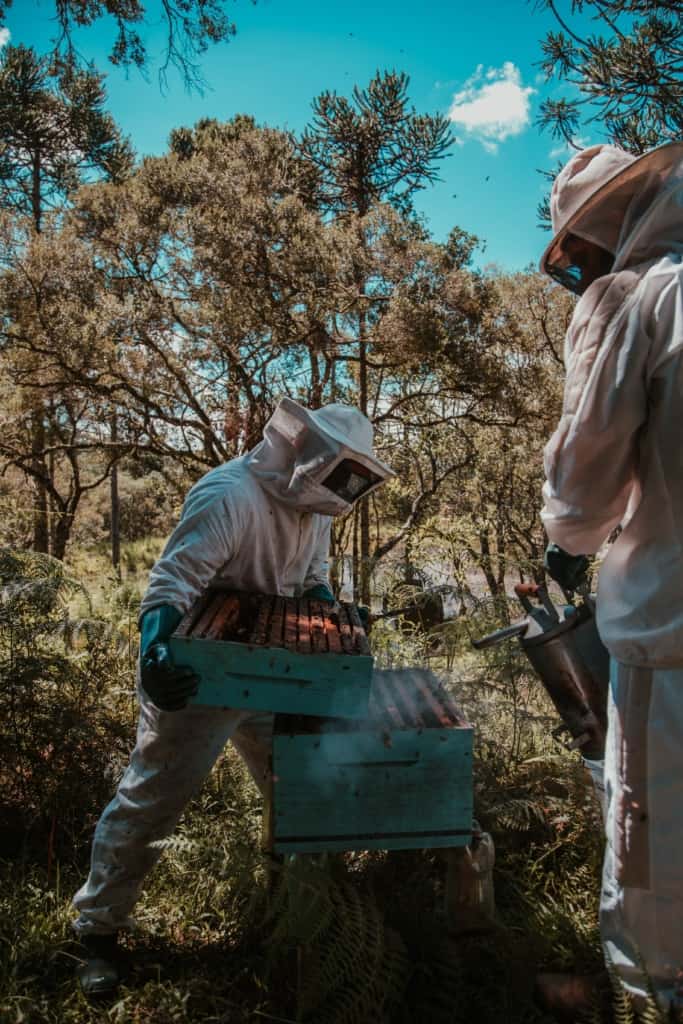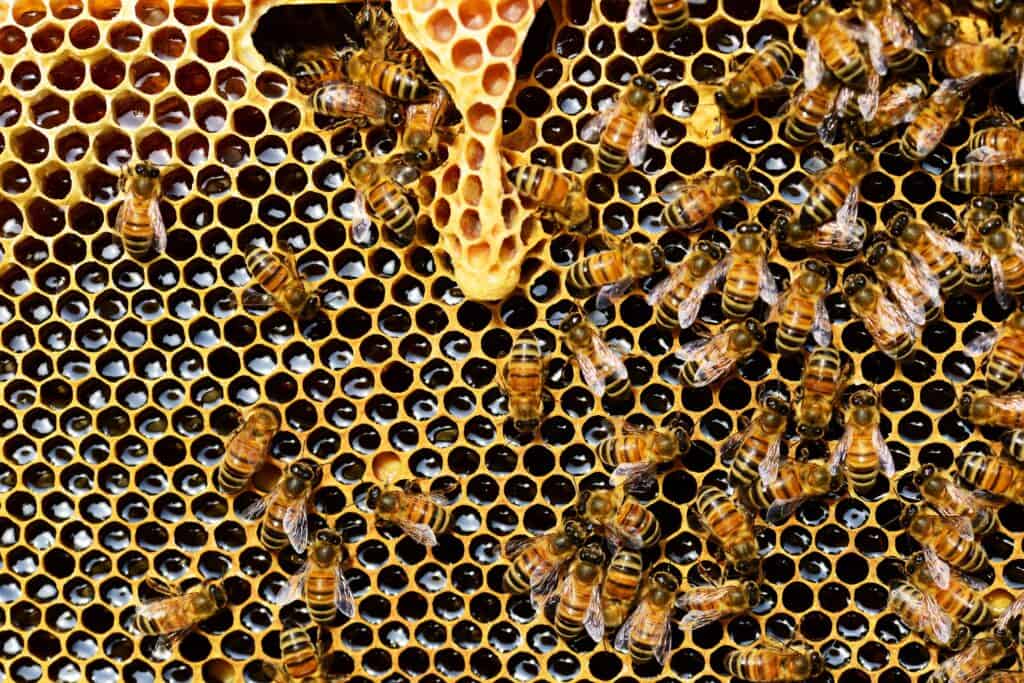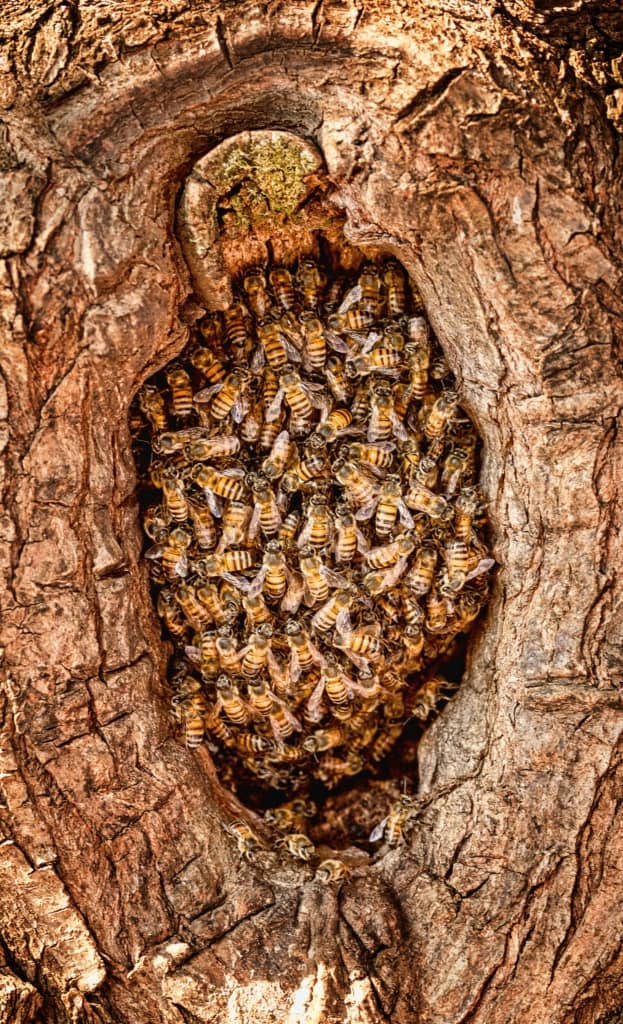Bees Nests
Bees are fascinating creatures that play a crucial role in our ecosystem. They are responsible for pollinating a wide variety of plants, which are essential for our survival. In this blog, we will take a closer look at the nests or hives that bees build to house their colonies. We will explore the structure and function of these nests, and discuss why they are so important to the bees and to the environment. Whether you are a beekeeper, a nature lover, or simply curious about these amazing insects, this blog has something for you.
Bees build their nests or hives out of wax, which they produce from glands on their abdomen. The nests are made up of many hexagonal cells, which the bees use to store honey, and pollen, and to raise their young.

Why Hexagonal shapes?
Bees build their nests out of wax, which they produce from glands on their abdomen. The nests are made up of many hexagonal cells, which the bees use to store honey, and pollen, and to raise their young. Bees choose to build in hexagonal shapes for several reasons.
First, hexagons are strong and efficient structures that can support a great deal of weight. This is important for the bees, who need to build a sturdy nest to protect their colony. Second, hexagons allow the bees to maximize the use of space. By building with hexagons, the bees can pack a large number of cells into a small space, which is important for a crowded hive. Finally, hexagons allow the bees to easily move from one cell to another, which is important for their daily activities. Overall, the hexagonal shape is an efficient and effective way for bees to build their nests.
The Function of a Bee’s Nest.
The primary function of a bee’s nest is to provide a safe and secure place for the bees to live and raise their young. The nest is also used to store honey and pollen, which the bees collect from flowers. Honey is a food source for the bees, while pollen is fed to the young bees to help them grow and develop. Additionally, the nest helps to regulate the temperature and humidity inside the
hive, which is important for the bees’ survival. By building a nest, bees are able to create a stable environment that can support the needs of their colony.

How Many Bees In a Nest?
The number of bees in a hive can vary depending on several factors, including the time of year and the health of the hive. In general, a healthy hive can contain anywhere from 10,000 to 60,000 bees. The number of bees in a hive is also directly related to the availability of food and the size of the hive.
When food is plentiful, a hive may have more bees, and a larger hive will be able to support more bees than a smaller one. Additionally, the number of bees in a hive may fluctuate over the course of the year, with fewer bees present during the winter months and more bees present during the spring and summer months when the hive is actively foraging for food.
What is the Difference Between a Bees Nest and a Bee Hive?
A bee’s nest and a bee’s hive are often used interchangeably, but they are slightly different. A bees’ nest is a general term that refers to any structure or location where a colony of bees lives and raises their young. This can include natural cavities in trees or rocks, as well as man-made structures like beehives.
A bee’s hive, on the other hand, specifically refers to a man-made structure that is designed to house a colony of bees. Hives are typically made of wood and are designed to mimic the natural cavities that bees would use for their nests. They often have removable frames that allow beekeepers to easily access the bees and manage the hive. In general, a bee’s hive is a specific type of bee’s nest.

What To Do If You Find a Bees Nest In Your House?
If you find a bee’s nest in your chimney or the roof of your house, the best course of action is to contact a professional beekeeper or pest control company to remove the nest. Bees are generally non-aggressive and will only sting if they feel threatened, but they can still pose a hazard if they are disturbed or if someone is allergic to their stings.
A professional beekeeper will have the experience and equipment to safely remove the bees and their nest without harming them. It is not recommended to try to remove the bees yourself, as this can be dangerous and may result in the bees becoming aggressive. Additionally, disturbing a bee’s nest can also be illegal in some areas, so it is important to check with local authorities before taking any action.
Best nest removal
Bee nest removal can be a tricky task, as it is important to ensure the safety of both the bees and the person attempting the removal. Bees play a vital role in the environment and are essential for the pollination of plants, so it is important to try to remove the nest without harming the bees if possible.
If the bee nest is located in a location that is easily accessible and poses no threat to humans, such as a tree or bush, it may be possible to simply wait for the bees to leave on their own. Bees typically only use a nest for a single season, after which they will abandon it. Once the bees have left, the nest can be safely removed.
If the nest is located in a location that is difficult to access or poses a risk to humans, such as inside a wall or attic, it may be necessary to hire a professional bee removal service. These companies have the expertise and equipment necessary to safely remove the nest without harming the bees.
If the nest must be removed, it is important to do so in a way that minimizes harm to the bees. This may involve using a bee vacuum or a hive box to relocate the bees to a new location. It is also important to properly dispose of the nest, as it may contain diseases or parasites that could be harmful to other insects or animals.
Overall, the best course of action when dealing with a bee nest is to try to remove it in a way that minimizes harm to the bees and the environment. If you are unsure about how to safely remove a bee nest, it is best to consult with a professional bee removal service.

Bees nest in wall
Bees can sometimes build nests in walls, either inside the wall itself or in the space between the wall and the exterior siding. This can be a problem because the bees can cause damage to the wall and may pose a risk to anyone who comes into contact with them.
If you discover a bee’s nest in a wall, it is important to take immediate action to remove it. The best course of action is usually to hire a professional bee removal service, as these companies have the expertise and equipment necessary to safely remove the nest without harming the bees.
The process of removing a bee’s nest from a wall typically involves opening a small hole in the wall to access the nest and using a bee vacuum or hive box to gently relocate the bees to a new location. The nest itself can then be removed and the hole in the wall sealed up.
It is important to note that it is illegal to remove or destroy a nest that is actively being used by bees, as it is protected under the Migratory Bird Treaty Act. Be sure to check local laws and regulations before attempting to remove any nest.
Overall, the best way to deal with a bee’s nest in a wall is to hire a professional bee removal service to safely and effectively remove the nest and relocate the bees to a new location.

Bees nesting habits
Bees are social insects that live in colonies and build nests to house their young and store food. The type of nest that a bee builds depends on the species of bee and the location of the nest.
Honey bees, for example, build nests out of wax and plant fibres. These nests, called hives, are typically located in trees, cavities in walls or cliffs, or in artificial hives provided by beekeepers. Honeybees create a series of hexagonal cells within the hive to store honey, and pollen, and to raise their young.
Bumblebees, on the other hand, build nests that are much smaller and more informal than honey bee hives. Bumblebees typically build nests in abandoned rodent burrows, under the ground, or in other small, enclosed spaces. The nest is made up of a series of wax cells that are used to store food and raise young.
Other types of bees, such as mason bees and leafcutter bees, also build nests to raise their young and store food. These nests may be located in the ground, in hollow stems or twigs, or in other small, protected spaces.
Overall, the nesting habits of bees vary depending on the species of bee and the location of the nest. However, all bees build nests to house their young and store food, and they will defend their nests aggressively if they feel threatened.
By taking steps to protect bees and their hives, we can help ensure the survival of these important insects and the vital role they play in our environment.

